Homol'ovi Archeology Day Page!


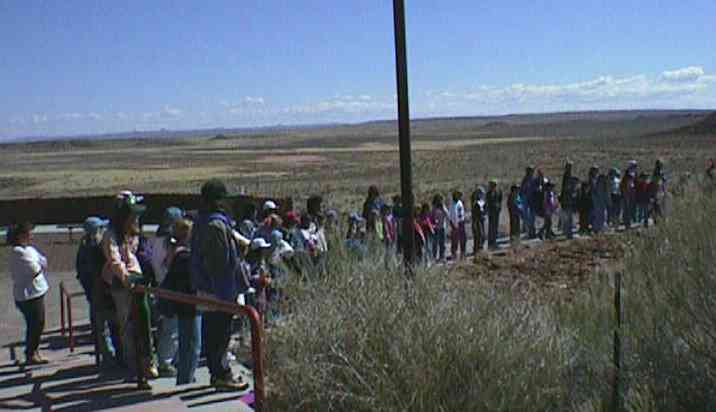
On April 18, 1998 the Arizona Cactus-Pine Girl Scouts participated in an Archeology Day extravaganza at Homol'ovi State Park. The girls attended a flag ceremony to launch the day of fun and learning. Tom, Celia, Walter, Linda, Heather and Neil led their groups through several activities detailed below. A full day of fun!
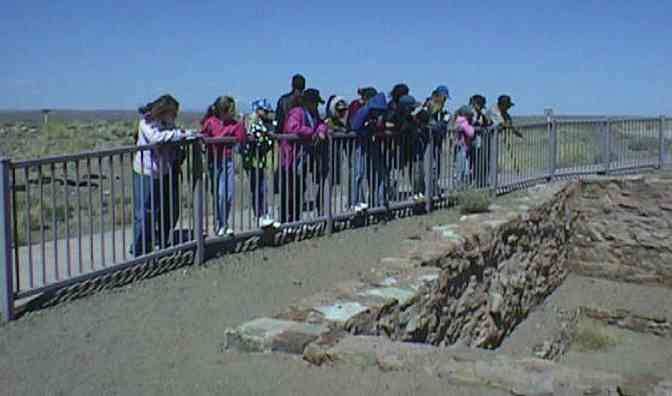
At Homolovi II, Michael took us to a Kiva in the middle of one Plaza. Then he showed us where another one is buried. This one has a mural of the San Francisco Peaks! We learned that Max is from the Water Clan (clans are groups of people who share ancestral ties). He lives on Second Mesa at Hopi. The ancestors of Hopi lived at Homol'ovi II about 600 years ago, before they moved onto the Hopi Mesas. Michael's desription of Hopi life today and the archaeological artifacts we find help us understand how people lived at Homol'ovi many years ago.
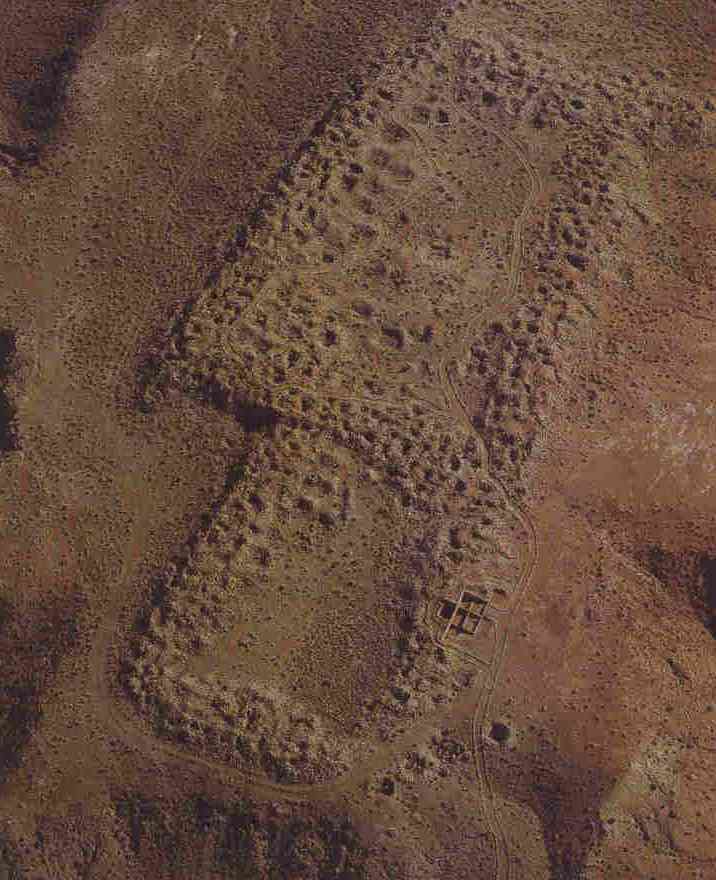

We also found lots of beautiful pottery. We learned that the yellow ware at Homol'ovi is similar to the Hopi ceramics made today. It is important not to remove artifacts from these places. It is against the law and it is disrespectful. We noticed how artifact looters once ravaged Homol'ovi II. (See aerial photo to right from Homol'ovi: A Cultural Crossroads by William H. Walker). We must leave these traces of the past so that others can enjoy them too!
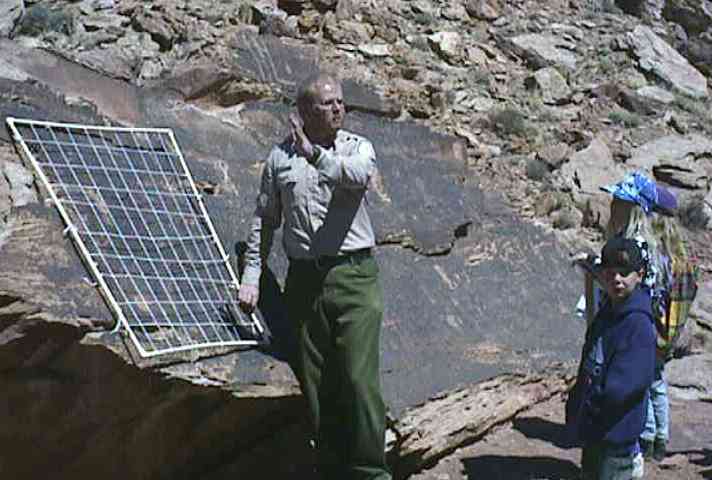
 After touring Homol'ovi II, we walked down to see some petroglyphs. There, Ken taught us how archeologists carefully document these symbols pecked into the stone. Although we don't understand the meaning of most rock art, some symbols do represent the markings of different clans. These clans have ancestral ties to Homol'ovi. We also viewed Kachinas etched in the stone (see photo to right.)
After touring Homol'ovi II, we walked down to see some petroglyphs. There, Ken taught us how archeologists carefully document these symbols pecked into the stone. Although we don't understand the meaning of most rock art, some symbols do represent the markings of different clans. These clans have ancestral ties to Homol'ovi. We also viewed Kachinas etched in the stone (see photo to right.)

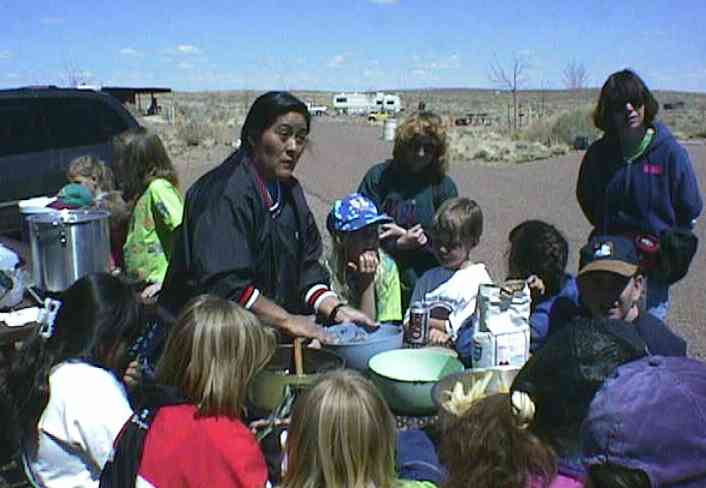 Max Taylor, taught us how to identify edible native plants. We tasted wild onions and a carrot-like plant that he collected near his home at Hopi. We wandered across the sand dunes in search of tasty treats! We thought the mustard plants were quite flavorful. Two Hopi women then filled our stomachs with piki bread and blue corn tamales. Using a teflon griddle to cook the piki bread, one of the Hopi women told us that it just did not measure up to her stone at home! Since some of us couldn't wait for the tamales to boil, we ate the blue corn mush raw! Ummm!
Max Taylor, taught us how to identify edible native plants. We tasted wild onions and a carrot-like plant that he collected near his home at Hopi. We wandered across the sand dunes in search of tasty treats! We thought the mustard plants were quite flavorful. Two Hopi women then filled our stomachs with piki bread and blue corn tamales. Using a teflon griddle to cook the piki bread, one of the Hopi women told us that it just did not measure up to her stone at home! Since some of us couldn't wait for the tamales to boil, we ate the blue corn mush raw! Ummm!


Back at the visitor center we used an interactive computer to view 3D models of Homolovi. The girls found this fascinating. (To see examples, visit Douglas Gann's Homolovi 3D Model Page listed below). We then analyzed artifacts and Ranger Karen taught us how to make bull roarers and rope. (We learned how not to hit each other with the bull roarers!) The girls all met back at the campground and received their archeology badges. All in all, a fantastic day! Special thanks to all the folks at Homol'ovi State Park and to Melanie for pulling the wonderful program together!!!!
To learn more about archeology, try the page links below. ENJOY!
| O T H E R F U N A N D I N T E R E S T I N G L I N K S |